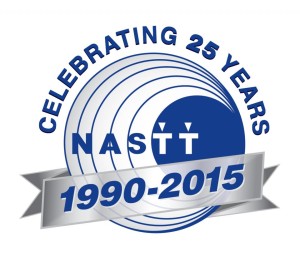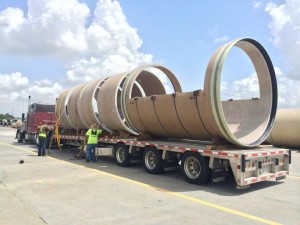Uncategorized
Contact Information: Joe Hubbard or Jennah Durant at 214-665-2200 or r6press@epa.gov
DALLAS– (July 22, 2015) The U.S. Environmental Protection Agency announced that the Pueblo of Santa Ana in N.M. has gained authority to administer its own water quality standards and certification programs under the Clean Water Act. The announcement was made today at the Regional Tribal Operations Committee (RTOC) meeting at the Pueblo of Isleta, N.M. Santa Ana is the 50th tribe of 567 federally recognized tribes nationwide to receive authority over the water quality standards and certification programs.
“This is an important achievement for the Pueblo of Santa Ana as they protect waters on their lands which are integral to daily life and their rich cultural heritage,” said EPA regional administrator Ron Curry. “EPA’s 1984 Indian Policy continues to represent a bold statement on the commitment to our partnership with federally recognized Indian tribes and to tribal self-governance in implementing environmental protection programs. EPA remains fully committed to engaging tribes as sovereign governments with a right to self-governance.”
The Pueblo will protect public health, aquatic life and wildlife on the 78,000 acre area that includes portions of the Rio Grande, the Rio Jemezand other water bodies.
Under the Clean Water Act, a tribe must be federally recognized, have a governing body, jurisdiction and capability in order to administer a water quality standards program. EPA’s approval of the tribe’s water quality standards program application is not an approval or disapproval of the tribe’s standards. EPA will review and take action on the tribe’s water quality standards in a separate agency action.
The goal of the Clean Water Act includes restoring and protecting the chemical, physical and biological integrity of the nation’s waters. Water quality standards established under the Clean Water Act set the tribe’s expectations for reservation water quality. These standards also serve as water quality goals for individual surface waters, guide and inform monitoring and assessment activities, and provide a legal basis for permitting and regulatory pollution controls.
For more information on Tribal eligibility applications to administer EPA regulatory programs, please visit: http://www.epa.gov/tribalportal/laws/tas.htm
The Environmental Protection Agency established the Tribal Operations Committee (TOC) in 1994 to assist EPA with the establishment of a national co-regulatory partnership. The intent of the TOC was to implement the 1984 Indian Policy by providing a forum for enhancing tribal environmental protection. The Region 6 RTOC was subsequently established to serve as a liaison between the TOC, the Tribes, and Region 6 on national policy issues and to articulate tribal concerns to senior managers and staff regarding regional issues.
On November 8, 1984, the EPA issued its Policy for the Administration of Environmental Programs on Indian Reservations. In doing so, the EPA became the first federal agency to adopt a formal Indian policy to guide its relations with tribal governments in the administration of its programs.
Source: EPA.gov
Uncategorized
NASTT turns 25 in 2015! What was happening 25 years ago?
On July 21, 1990, Pink Floyd’s “The Wall” was performed where the Berlin Wall once stood.
On July 22, 1990, Greg LeMond of the United States won his third Tour de France.
On July 25, 1990, The Serbian Democratic Party declared the sovereignty of the Serbs in Croatia.
Check in every Friday in 2015 when NASTT posts more fun facts about 25 years ago…
Uncategorized
Clearwater, Florida : Perma-Liner™ announces an exclusive partnership for North America, featuring local distribution facilities for the Perma-Main™ CIPP lining material to better support our Certified Installers. This partnership will provide market competitive material pricing for use with the Perma-Main™ (Patent Pending) state-of-the-art, compact CIPP lining equipment.
Perma-Liner™ (PLI) is the leading manufacturer and supplier of trenchless pipeline rehabilitation equipment & materials in North America. Since 1999 PLI has developed systems to rehabilitate existing sewer systems without excavation, in most cases. Our experience in the CIPP (Cured-In-Place-Pipe) industry has allowed Perma-Liner™ to design, patent, and manufacture state of the art technology. Based on the design of the equipment and materials, PLI has the ability to offer compact “User Friendly” systems. Perma-Liner™ provides complete “Turn-Key” Trailer or Truck Build-Out Packages, Certification/Training, Technical Support, Marketing Support and Specification & Design Support.
For more information, contact:
Name: Morgan Trouard
Title: Director of Marketing
Phone: 1-866-336-2568
Uncategorized
Houston, Texas, July 14, 2015 – Hobas Pipe USA is currently supplying pipe for the rebuilding of the 40 year old Turcot Interchange, southwest of downtown Montreal. This project will continue for several years and is estimated to cost CA$3 billion.
the 40 year old Turcot Interchange, southwest of downtown Montreal. This project will continue for several years and is estimated to cost CA$3 billion.
Hobas plans to provide over 2,000 feet of 110-inch diameter pressure pipe for this project. This is the second Hobas project in Montreal to date.
Hobas pipe sizes range from 18 to 126 inches and larger for both pressure and gravity applications. Hobas Pipe USA is also certified by the International Organization for Standardization to ISO 14001 and 9001.
For more information, please contact Hobas Quebec at 1-450-951-6607 or Hobas Pipe USA at 800-856-7473 or e-mail at info@Hobaspipe.com. Facts are also available at www.Hobaspipe.com and www.Hobas.ca.
Uncategorized
NASTT turns 25 in 2015! What was happening 25 years ago? 
On July 12, 1990, Boris Yeltsin quit the Soviet Communist Party.
On July 14, 1990, “Howard Stern‘s Summer Show” premiered on WWOR-TV (NYC).
On July 17, 1990, NY Yankee Deion Sanders hit an inside park homer.
Check in every Friday in 2015 when NASTT posts more fun facts about 25 years ago…
Uncategorized
SCHAFFHAUSEN, Switzerland, –Xylem Inc. (NYSE: XYL), a leading global water technology company dedicated to solving the world’s most challenging water issues,has launched a new YouTube channel dedicated to its Flygt brand. The new channel features informative, engaging content including a behind-the-scenes video of one of Xylem’s main factories producing Flygt branded solutions, a Flygt Experior non-clog test, service ‘how-to’ guides, product information videos and case stories demonstrating Flygt in action.
The channel aims to continuously provide customers with helpful information in an easy-to-access, entertaining manner. Country-specific playlists and local language captions offer a user-friendly experience.
“Xylem’s Flygt brand boasts a rich legacy of being at the forefront of solving water and wastewater challenges for more than 100 years,” saidVeronica Jergelind, Marketing Communications Manager for Xylem’s transport business. “Through this new channel we will share engaging digital content that demonstrates how our Flygt water and wastewater solutions solve complex water challenges around the world.”
Xylem’s Flygt brand provides customers with a complete range of products and solutions for moving water and wastewater, as well as advanced monitoring and control equipment to optimize solutions’ operation.
About Xylem
Xylem (XYL) is a leading global water technology provider, enabling customers to transport, treat, test and efficiently use water in public utility, residential and commercial building services, industrial and agricultural settings. The company does business in more than 150 countries through a number of market-leading product brands, and its people bring broad applications expertise with a strong focus on finding local solutions to the world’s most challenging water and wastewater problems. Xylem is headquartered in Rye Brook, N.Y., with 2014 revenues of $3.9 billion and approximately 12,500 employees worldwide. Xylem was named to the Dow Jones Sustainability Index for the last three years for advancing sustainable business practices and solutions worldwide.
The name Xylem is derived from classical Greek and is the tissue that transports water in plants, highlighting the engineering efficiency of our water-centric business by linking it with the best water transportation of all — that which occurs in nature. For more information, please visit www.xyleminc.com


